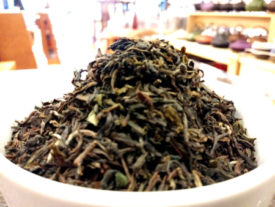What are Autumnal Flush Darjeeling Teas?

Darjeeling traditionally produces black tea. Most tea lovers have enjoyed a light, crisp, and herbaceous first flush, or a full, muscatel and robust second flush, but not many have tried the autumnal flush. Most of the time, the lack of autumnal enthusiasm has to do with supply and lack of opportunity to purchase the elusive flush.
The harvesting season in Darjeeling runs from mid-March through November, as the tea gradually progress through a quartet of distinct seasons known as “flushes.” The tea is often sold not only by single estate but also by the flush. You also find this within the wine establishment as well.
The Autumnal flush is the last flush of the year, and begins toward the end of October, once the monsoon has withdrawn. At this time of the year, the rains have tapered off, and the temperatures have begun to drop. The teas bushes reduce their output and begin to move toward hibernation. The Autumnal flush is the shortest harvest of the year and only lasts 30 days. Give or take a few.
When it comes to the art of processing, the freshly plucked leaves are withered overnight, rolled and fermented before being fired. The teas have an electric brightness to the cup, with fragrant floral aromas, and the flavors that contain a hint of stone fruit notes, muscatel grapes and toasty nut undertones.
This flush tends to be less floral, a little more well-rounded, and delicate, as well as being deeply fruity, with notes of ripe grapes and berries. The color of the liquor is bright amber to burgundy. Due to its complexity of flavor this flush has become a personal favorite of India’s most discerning tea tasters and connoisseurs.
At Tin Roof, we are lucky enough to still have one Autumnal flush available. Next time you’re in the shop try a cup of our Darjeeling TGFOP1 Castleton (Autumnal).

